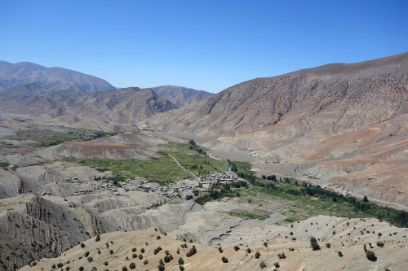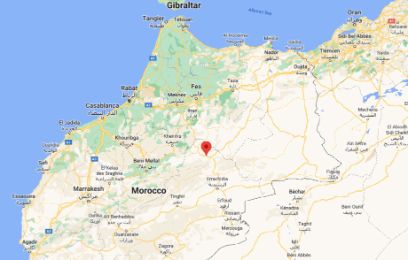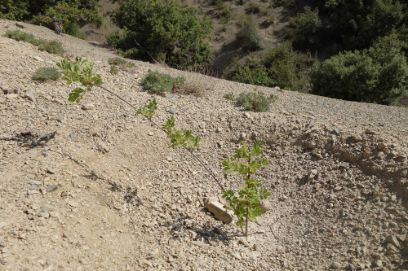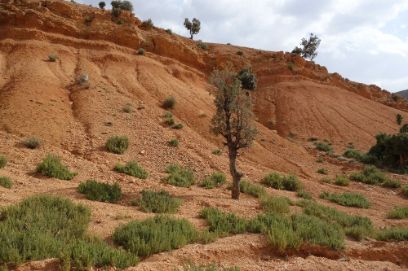- News
Watershed techniques and approaches in northern Morocco
30.11.2022 A joint ebook by BFH-HAFL and University of Bern staff showcases regeneration processes by local villagers in the Atlas Mountains.

Watching much-needed rainfall do more harm than good in Morocco is heartbreaking. BHF-HAFL scientific collaborator Stefan Graf’s video shows topsoil washing away, the ensuing widespread erosion, and then the bone-dry aftermath.
Stefan shared his video to promote the release of the ebook “Gestion intégrée des bassins versants et gestion durable des terres dans la région de Midelt au Moyen Atlas, Maroc”, which was published in collaboration with the Centre for Development and Environment (CDE) of the University of Bern and WOCAT.
His co-authors and project collaborators are Isabelle Providoli (UniBern), Pascale Waelti (BFH-HAFL), and Christoph Studer (BFH-HAFL). The book is designed for those working or interested in sustainable land management (SLM), forestry, and livestock grazing. It documents many findings, including:
-
production and land-use systems in the watersheds of the Midelt region;
-
problems of management and degradation of natural resources;
-
good practices for SLM and integrated management of watersheds;
-
technologies and approaches to SLM in the region;
-
and recommendations for SLM technologies.

Power of the people
In 2017, Stefan spent seven months in the Midelt region training and supporting local practitioners in documenting sustainable land management (SLM) technologies and approaches, using the WOCAT questionnaires. “It’s difficult to be proud of this work, as it’s not me who did it, but the people,” Stefan said. “I found it amazing to see how much is going on in this area. There are so many sustainable land management approaches and techniques being used, from historical ways to new innovations.”
For Pascale, this book identifies and gives recognition to the most impactful technologies and approaches. “Mostly these are the initiatives of the people in the fields, the indigenous knowledge,” she said. “The most interesting approaches described are when different stakeholders decided to work together, as for example in Taouraoute. The villagers wanted to protect the nearby forest. The village association worked with the council of elders in collaboration with forestry services, and their plan was supported by the local government. This collaboration worked – the forest is much less degraded in this area than in the rest of the watershed.”

Background
The initiative, to regreen this semi-arid to arid region, was originally started by the Food and Agriculture Organization (FAO) and the High Commission for Water and Forests and the Fight against Desertification (HCEFLCD). The Swiss Agency for Development and Cooperation (SDC) financed the third and final phase from 2016–2019.
Stefan said the challenge now is to keep all the stakeholders enthusiastic about potential successes and learning from best practices. “There’s not much water so it takes time for things to grow. It’s a vicious circle of soil degradation, but it can become a proper working circle if the people work together.”
Promoting local innovations
“All the techniques and approaches documented in the WOCAT database are for all to see,” Pascale said, “but, for us, the publication was designed to give visibility to local innovations. The book was meant for practitioners in the Atlas region, but it could also be used by others in Morocco and in other similar Mediterranean areas.”
Some of the techniques documented range from:
-
livestock management, for example in the Agdal (the traditional community-owned protected grazing land) and limitations of the herd. Cattle is grazed collectively by families from several villages – each of the 40 families, which own one to two cows per household, is responsible for the cattle for one day;
-
vegetation management, such as the plantation of ash or saltbush, which grow well in these conditions as forage and firewood;
-
structure of cultivated areas, like the terraces or the Khtarat (the traditional irrigation system);
-
several approaches, such as the tribal council’s management of natural resources, the management of rosemary growth (there are 2000 hectares of wild rosemary, distilled for essential oils), and a small test plot of saltbush and holly oak trees.
